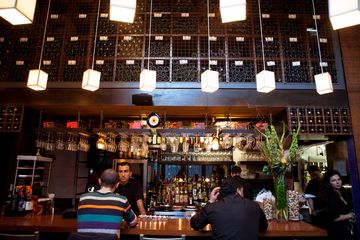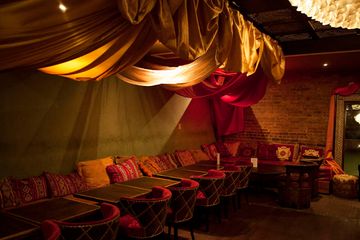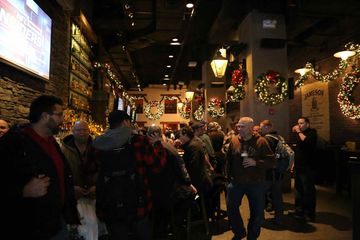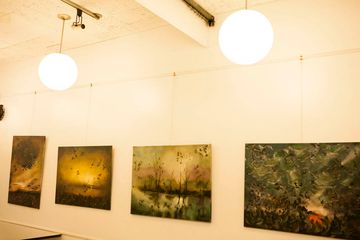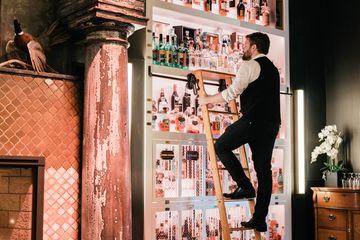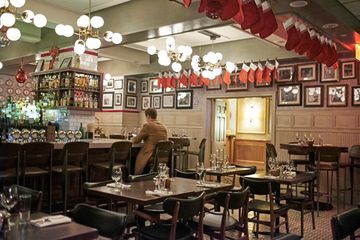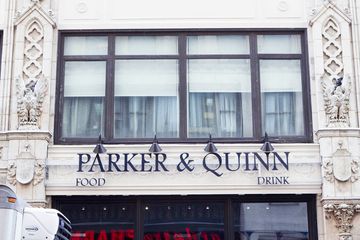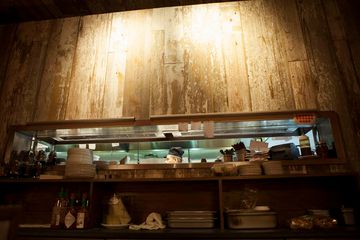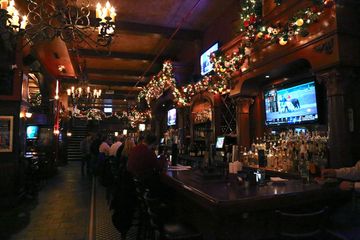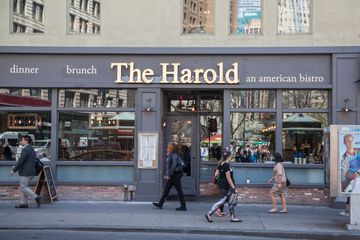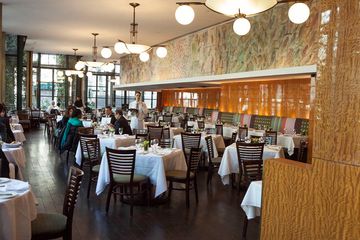Walking into the Harold, a casual bistro located in the heart of Herald Square, I immediately noticed its warm, welcoming atmosphere. A family of tourists in shorts and sneakers munched happily on burgers while business men in suits chatted at the bar. I even witnessed something that I hardly ever see - several young people throughout the multi-level space feeling comfortable enough to dine alone. When I spoke to Angelo, the Harold’s friendly young manager, I commented on the restaurant’s ability to attract people from all walks of life. “I’m glad you noticed, ” he said, and explained that the Harold’s proximity to Penn Station makes it a hub for tourists and commuters as well as locals. They certainly do their best to create an environment where one can either sit down at the bar, dine at their own table, or seat themselves at the central communal table and feel relaxed. As Angelo showed me around the Harold’s spacious main floor, I asked him how they had come up with the name. “We started out as ‘The Herald, ’ for Herald Square, but then we realized that it was a pretty common name in the area. ” To differentiate the bistro from other businesses nearby, they renamed it “The Harold. ”By the time the restaurant opened its doors in July of 2014, “Harold” had evolved into a character in his own right, a well-traveled 1920s gentleman whose traveling hat inspired the restaurant’s logo and décor. As we walked up to the mezzanine, where private events and parties are often held, Angelo pointed out Harold’s antique luggage, which is covered in old stickers and stamps. Taking a seat at the bar, the Manhattan Sideways team was treated to some specialty cocktails. I particularly enjoyed the “Strawberry Fields, ” made with vodka, lemon juice, strawberry puree, and prosecco. I also tasted the fruity rosé sangria (the recipe is a secret). Other members of the Manhattan Sideways team were fans of the refreshing “New Go-To, ” made with organic cucumber vodka, fresh lime juice, St. Germain, and pineapple juice, the New York Sour, and the restaurant’s signature “Harold, ” complete with gin, elderflower liqueur, lemon, basil, and topped off with prosecco. As we sipped our drinks, I admired the impressive seafood royale platter that the customer next to us had ordered. When Angelo returned to the bar, I asked him about the Harold’s menu. “It’s not very large, ” he told me, “but we have something for everyone. ” He emphasized the chef’s use of local and seasonal ingredients. When questioned about his favorite menu item, Angelo's eyes lit up. “Definitely the six ounce burger topped with grilled onions, New York cheddar, and applewood smoked bacon. ” Tempted by one of my favorites, the soft, fresh burrata, I happily had a taste and then went on to try the beet salad, which was garnished with spicy micro greens and an exotic black garlic marinated in molasses. Others dipped their forks into the blackened salmon, and crispy fish and chips. The Harold also has a vibrant breakfast crowd during the week where eggs take center stage. Yes, the food and the drink are quite good, but it is still The Harold's welcoming, inclusive atmosphere that grabbed my attention from the moment I stepped inside. In Angelo’s words, “We don’t care if people are wearing suits or jeans and t-shirts - we just want them to come and enjoy good food and cocktails, ” and, I might add, an eclectic mix of great people.
